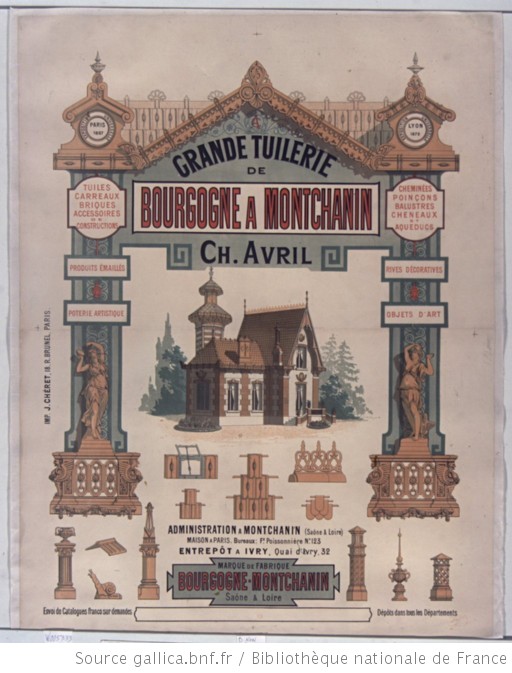Terracotta floor
Download PDFThe tiles that are constituting the terracotta floor are made of a mix of clay and sand baked in a very high temperature, superior of 900 degrees. The colour after baking depends on the raw material used and its shades, as clay has many of it that could vary between red and yellow. More over, in a hand made production, the tiles position in the oven can also has an impact on the final colour. Finally, once they are baked, the tiles can be covered with enamel to give them a smooth aspect, thanks to a glass layer made of iron oxide base, manganese, tin and then a second firing. These terracotta tiles owns different names according to the region in which they are made, indeed, we speak about Provençal tomettes, always made in a hexagonal shape, tiles of Bourgogne or Gironde or even malons or parefeuilles when they are squared or rectangular.
The terracotta tiles are the oldest manufactured floor of history. Indeed, its use went back to ancient Egypt before spreading to the whole Mediterranean pond and especially the territories in the Roman Empire until its fall when they loose their hegemony. Then, we find them, much more later, around the 12th century when they were used as an alternative to the natural stone.
At the beginning of the 18th century, in France the tiles were marked on the back with a cross, a circle, a square, or any other symbol hand made. Then in the last quarter of the century, with letters or the craftsman initials. We find them also during this period in Italy, especially on the palaces’ floors where they were called Terracotta.
It’s truly during the 19th century that the terracotta floor knows a renew and especially thanks to the appearance of mechanical tiles from the intensive industrial fabrication from 1850. The small tiles are recognizable thanks to their perfect calibration and often thanks to the mark on the back where are written the name and the place of the manufacture.
In Provence, for instance, the tomettes are always in a hexagonal shape and in general with red clay that can sometimes be enamelled. Their fabrication was developed to cope with the economical crisis of 1829 which brought a fall of the people purchasing power because of the industrialisation. Indeed, their hexagonal shape allowing to fit them together reduced the use of seal substance.The main tiles factories in Provence were placed in the city of Salernes, where the clayed soil was ideal for the activity development. From the 1830’s, workshops were created where were made tiles, bricks, pottery and malons. Quickly, the malons start to be the speciality and the production becomes only the one of hexagonal malons called tomettes.
The tomette of Salernes knows a quick success in the region and abroad. Indeed, in the 1850’s, its production takes an important sweep, the workshops are extended and news factories are built to supply the merchants shops in Toulon, Marseilles and Nice but also in Africa, Italy and United States of America. This success remains until the beginning of the 20th century, before the production to know a decline but hold on even with the events that marked the century. It’s though the World War II that revives the activity, as the tomettes are then used for the reconstruction of the houses. Twenty years later, they diversify to respond to the new aesthetic expectations by introducing the enamelled decoration
The second region to know an important rise thanks to the production of terracotta in the 19th century, is the Bourgogne and more precisely, was we called the Ceramic Valley. Along the Centre canal at the confluence of the Loire, near forty ceramic manufactories made any sort of products interracotta, sandstone or earthenware. This implantation is explicated by the clayed soil but also the creation of the Centre canal in the 18th century and the railway network facilitating the transport.
Like for the Provence, the production of tiles knows an important success from the 1850’s and during a century before declining in the late 20th century. Montchanin for instance was the head quarters of one of the most important tiles factory in France. Developed by Charles Avril (1817-1891), it becomes the mecanical and perfected Grande Tuilerie of Bourgogne and merged in 1938 with the Société des grandes tuileries bourguignonnes of Chagny. After 1945, the competition of new materials provokes a progressive decline and the business closing in 1967.
Thus, little by little forgotten in the mid 20th century because considered as an outmoded and old material, the terracotta tiles were then replaced by new floorings responding better to the new tastes. It’s only since the beginning of the 21th century, that we discover again their proprieties and heating performances able to perfectly adapt to a modern heating system like the subfloor heating for instance. Thus, they are more and more used again for new constructions and restoration.












